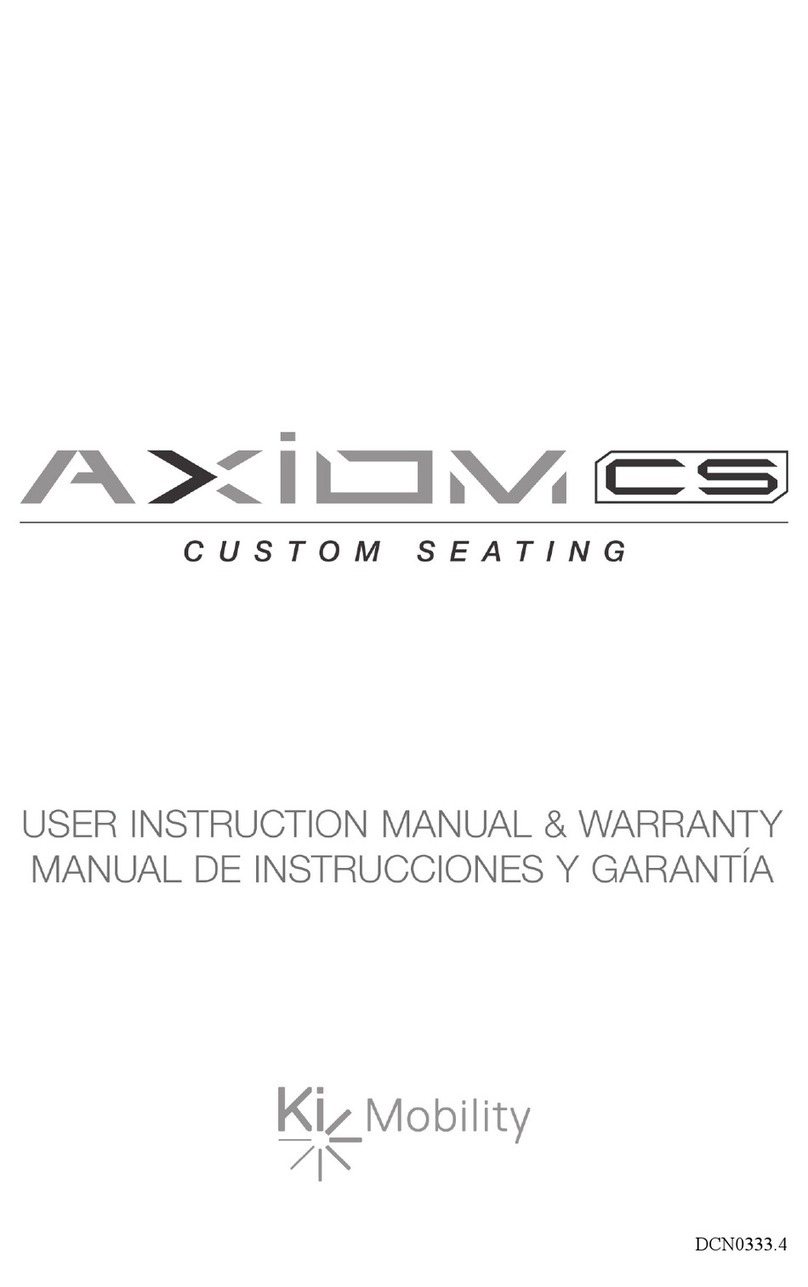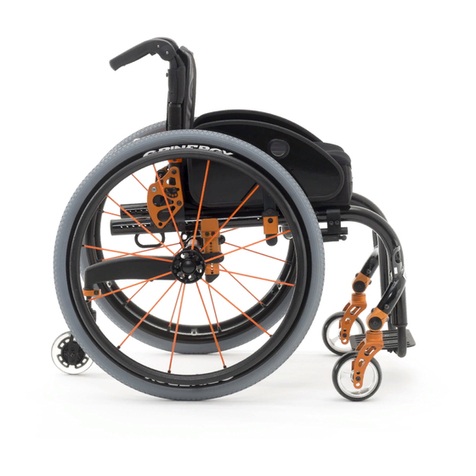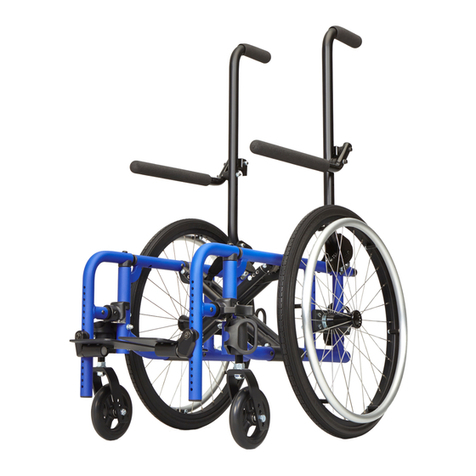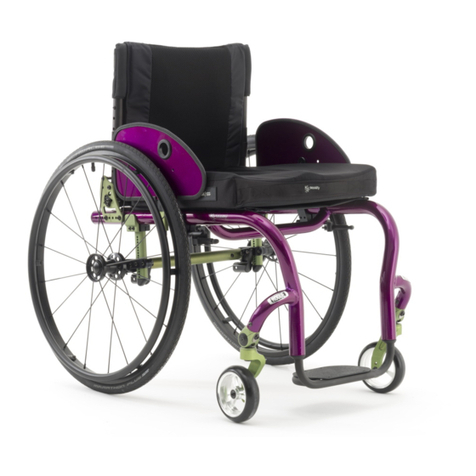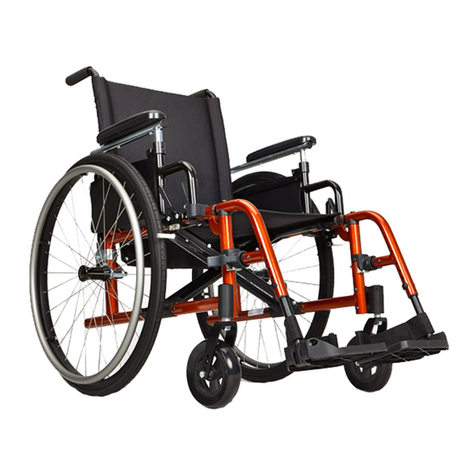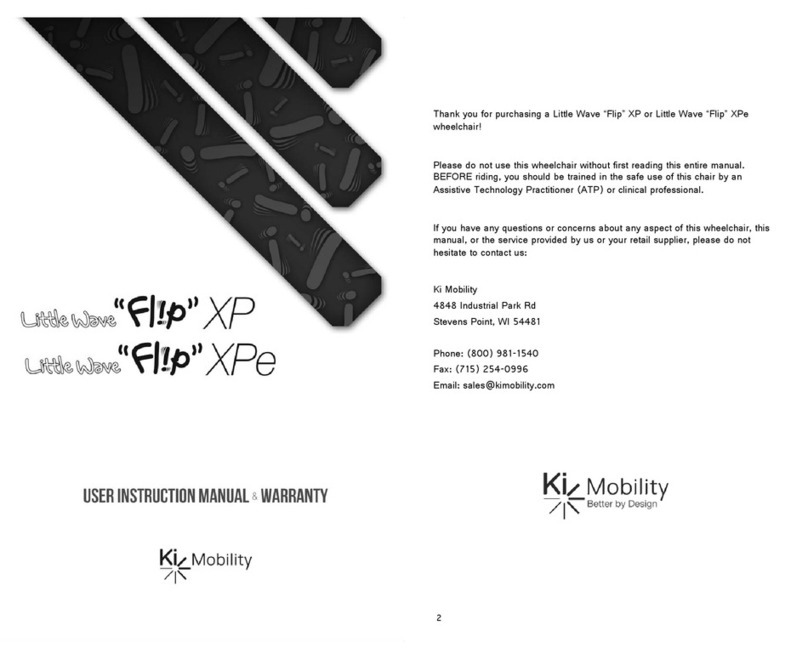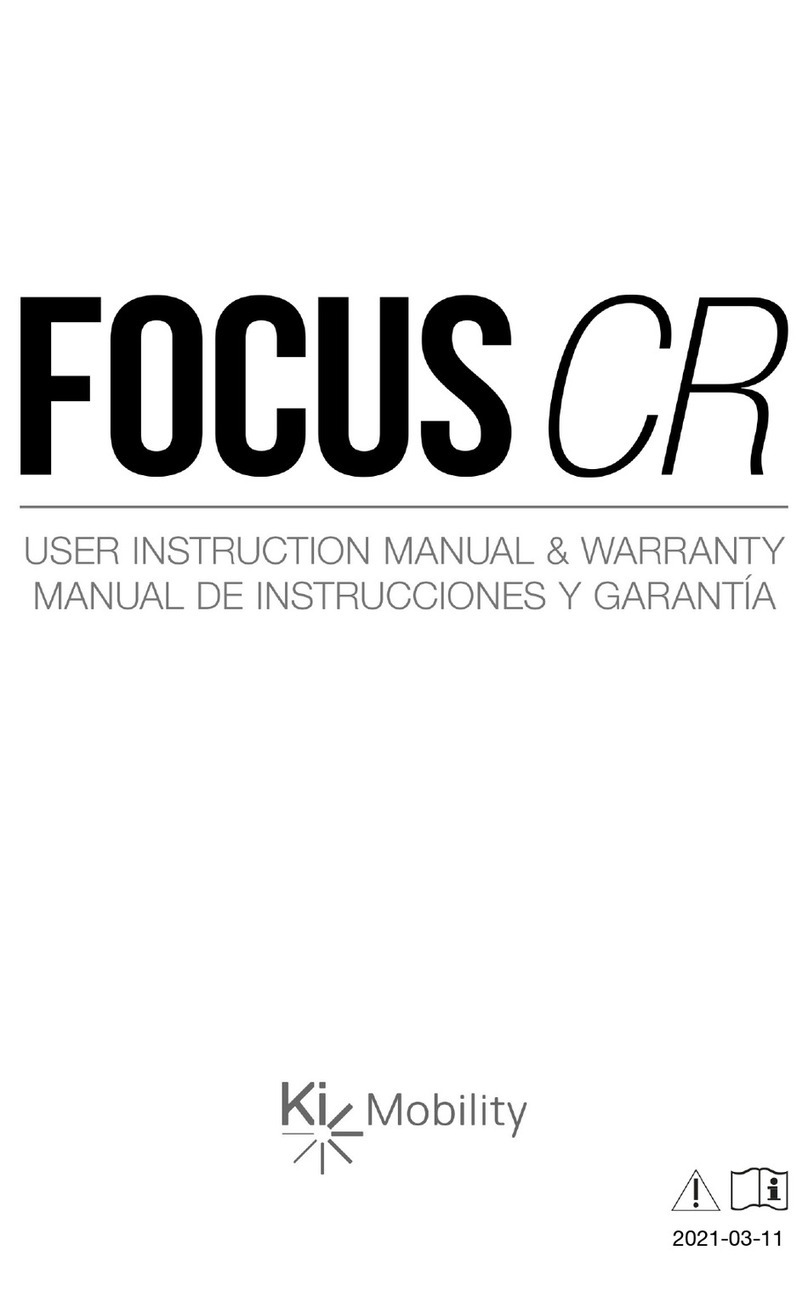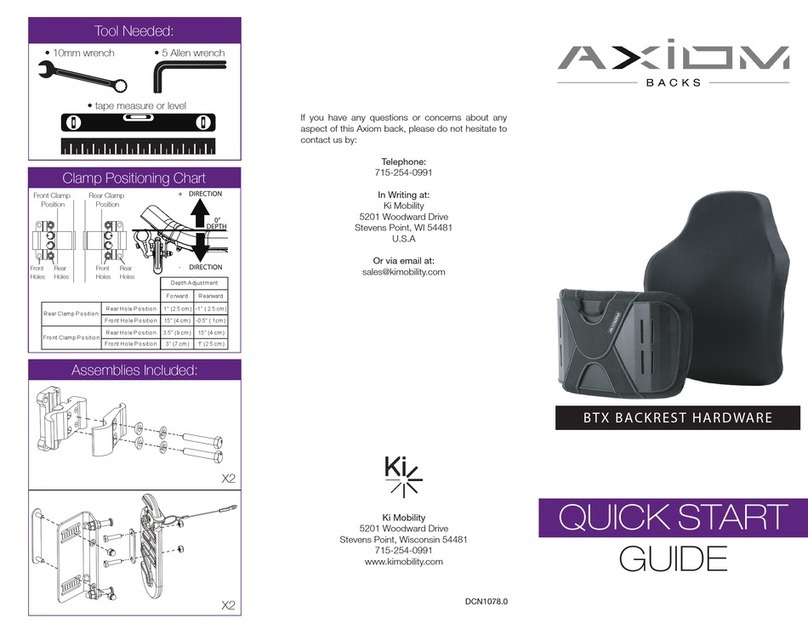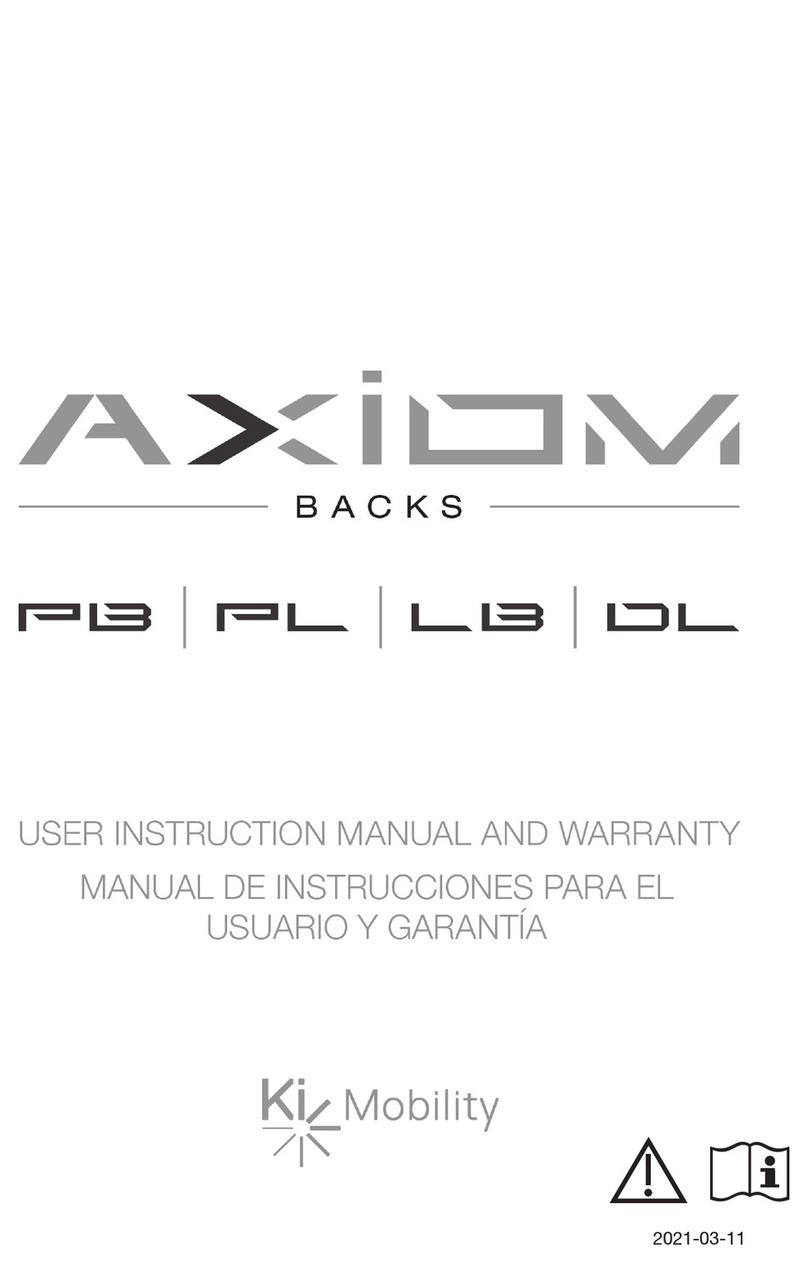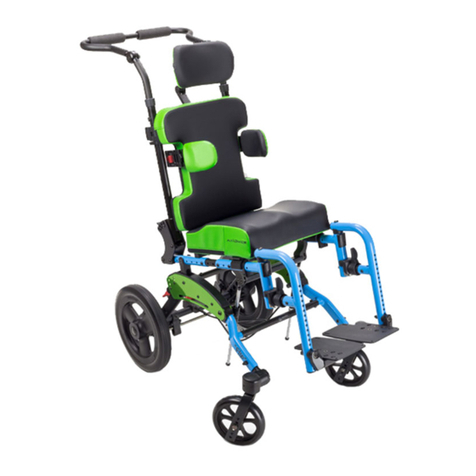XII. Maintenance
C. MAINTENANCE TIPS
1. Axles & Axle Sleeves:
Check axles and axle sleeves every six months to make sure they are tight. Loose
sleeves will damage the axle plate and will affect performance.
2. Tire Air Pressure:
Check air pressure in pneumatic tires at least ONCE A WEEK. The wheel locks
will not grip properly if you fail to maintain the air pressure shown on tire
sidewall.
D. CLEANING
1. Paint Finish
a. Clean the painted surfaces with mild soap at least once a month.
b. Protect the paint with a coat of non-abrasive auto wax every three months.
2. Axles and Moving Parts
a. Clean around axles and moving parts WEEKLY with a slightly damp (not wet)
cloth.
b. Wipe off or blow away any fluff, dust or dirt on axles or moving parts.
NOTE– You do not need to grease or oil the chair.
3. Upholstery
a. Hand-wash (machine washing may damage fabric).
b. Drip-dry only. DO NOT machine dry as heat will damage fabric.
E. STORAGE TIPS
1. Store your chair in a clean, dry area. If you fail to do so, parts may rust or
corrode.
2. Before using your chair, make sure it is in proper working order. Inspect and
service all items on the “Maintenance Chart”.
3. If stored for more than three months, have your chair inspected by an authorized
supplier before use.
38
I. INTRODUCTION ....................................................................................
II. TABLE OF CONTENTS.........................................................................
III. NOTICE - READ BEFORE USE .........................................................
A. Choose the Right Chair & Safety Options ......................................
B. Review This Manual Often ..................................................................
C. Warnings .........................................................................................
IV. GENERAL WARNINGS....................................................................
A. Weight Limit ....................................................................................
B. Weight Training ................................................................................
C. Getting to Know Your Chair ................................................................
D. To Reduce The Risk of an Accident ......................................................
E. Safety Checklist ................................................................................
F. Changes & Adjustments .....................................................................
G. Environmental Conditions ..................................................................
H. Terrain ............................................................................................
I. Street Use .......................................................................................
J. Motor Vehicle Safety .........................................................................
K. When You Need Help .........................................................................
V. WARNINGS: FALLS & TIP-OVERS ...................................................
A. Center of Balance .............................................................................
B. Dressing or Changing Clothes .............................................................
C. Wheelies .........................................................................................
D. Obstacles ........................................................................................
E. Reaching or Leaning .........................................................................
F. Moving Backward ..............................................................................
G. Ramps, Slopes & Sidehills ..................................................................
H. Transfers .........................................................................................
I. Curbs & Steps ...................................................................................
J. Stairs ..............................................................................................
K. Escalators ........................................................................................
VI. WARNINGS: FOR SAFE USE ..................................................
A. Learning To Do A “Wheelie” ...............................................................
B. Descending A Curb or Single Step .......................................................
C. Climbing A Curb or Single Step ...........................................................
D. Climbing Stairs .................................................................................
E. Descending Stairs ..............................................................................
F. Maintenance .............................................................................…
G. Your Chair and its Parts .....................................................
VII. WARNINGS: COMPONENTS & OPTIONS ...................................
A. Anti-Tip Tubes (Optional) ...................................................................
B. Armrests .........................................................................................
C. Cushion & Sling Seats .......................................................................
D. Fasteners ........................................................................................
E. Footrests ..........................................................................................
F. Pneumatic Tires ................................................................................
G. Positioning Belts (Optional) ................................................................
H. Power Drive .....................................................................................
I. Push Handles (Optional) ....................................................................
II. Table of Contents
2
3
5
5
5
5
5
6
6
6
6
7
7
7
8
8
8
9
10
10
10
11
11
12
13
13
14
15
15
15
16
16
16
17
17
17
18
18
19
19
19
19
20
20
20
21
21
21
3
